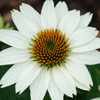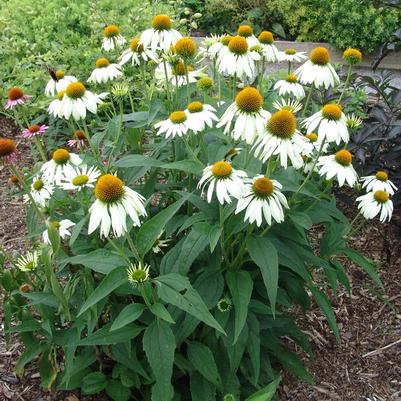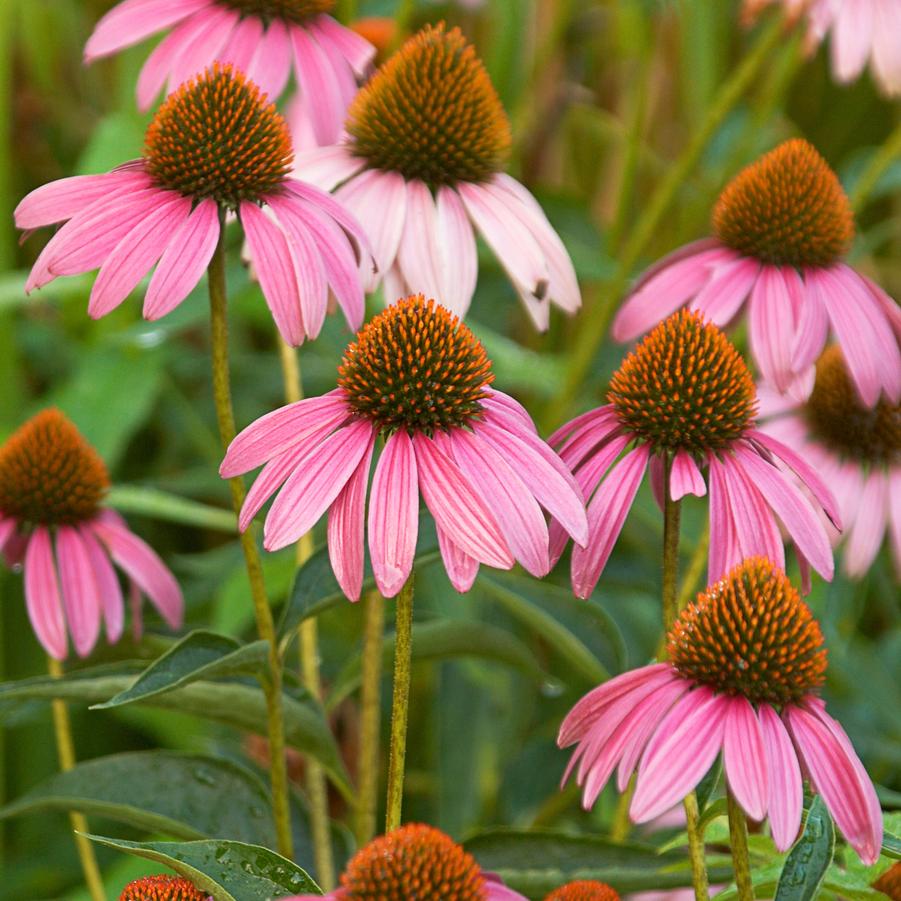
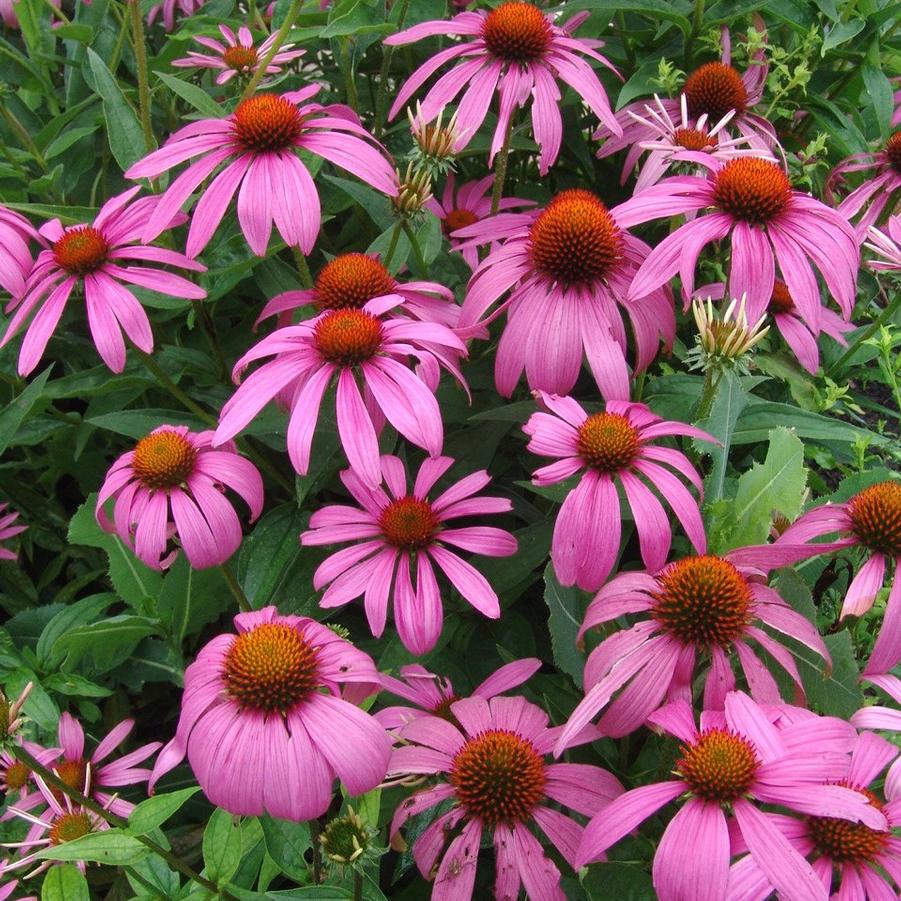
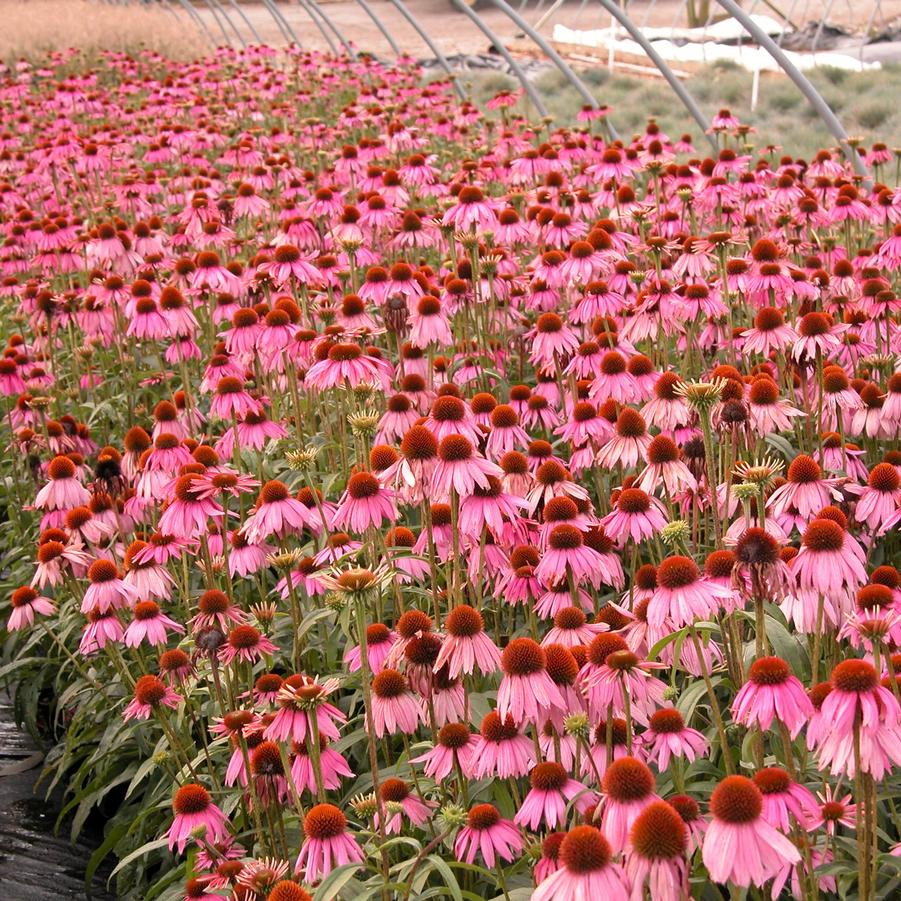



Plant Calculator
Enter the approximate length and width of the area you will be planting and click 'Calculate' to determine how many Echinacea purpurea you will need.
Correct and successful spacing is complex and depends on project conditions. We encourage you to call us at 877-ECO-PLUG for project specific recommendations and further assistance.
Echinacea purpurea
purple coneflower
- Category: Perennial, Native
- Hardiness Zone: 3-9
- Height: 2-3 Feet
- Spread: 18-24 Inches
- Spacing: 12 Inches
- Bloom Color: Violet
One of the great butterfly magnets of the native perennial garden! Coneflowers are easy to grow in average to dry, well drained soils. Flowers with large orange gold spiky centers and strong reflexed rose pink petals appear in July and August. Very drought tolerant.
Click here to download technical information for growers:
Green Infrastructure
| • | Green Roof |
Attributes
| • | Native to North America |
| • | Drought Tolerant |
| • | Salt Tolerance |
| • | Clay Tolerance |
| • | Cut Flower |
| • | Edible |
Propagation Type
| • | Open pollinated |
Additional Information about Echinacea purpurea
The poster child for the native plant movement, Echinacea purpurea can now be found anywhere, from the home garden to prairie restoration to corporate plazas. Eminently endurable, resilient, and beautiful, purple coneflower blooms in late summer with purple-pink petals surrounding brilliant orange cones. Grown from seed, purple coneflower grows 2-4’ in height and the flower head sits on a sturdy stem that can be single and upright or branched. A wonderful plant to naturalize in the garden or planted in mass for a powerful and colorful statement in August.
Ranging from Texas to New York, Echinacea purpurea can be found in moist prairies, meadows and open woods. As popular as they are in the landscape, coneflower is uncommon in the wild. They prefer full sun in fertile well-drained soil but one of the best features of Echinacea is the way it is able to tolerate drought, clay, high heat and humidity, part sun, and poor soils.
The flowers of coneflower provide multiple seasons of interest from summer while it blooms to fall and winter where the great seedheads are upright and structural. Butterflies and bees love the nectar of the flowers and goldfinches can’t help but flock to the seeds during the fall. Echinacea is an essential component in our mid-height meadow – an example of how spaces can be designed for the height and transparency for urban needs.
Growing & Maintenance Tips for Echinacea purpurea
Echinacea take a wide array of conditions from average dry soil to medium, well-drained soil in part shade to full sun. Plant flowers best in full sun. Low-maintenance and tolerates drought, humidity, heat, poor soil. Resistant to pest and disease but sometimes suspectible to aster yellows disease. To encourage longer bloom time, flower heads can be deadheaded but not necessary. Seedheads are a delightful source of food for birds. To propagate, divide clump in the spring every 4 years. Root cuttings are also successful. Propagation by seed is easy if the birds don't eat it all first.

